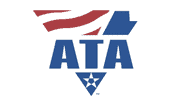Moving can be stressful enough when it’s just you moving out of your place into a new home. So, when you add hundreds of employees, office equipment, and clients’ data to keep safe throughout a move, you’ve got a whole other layer of stress to work through and manage. Although there are many moving parts, this process does not have to cause a headache. There are plenty of actions you can take to make moving from one office to another a breeze. Let’s “unpack” a few helpful steps to make your new office transition seamless!
6 Months Before Move
In the early stages of this process, you’ll want to focus on the big picture and your goals for moving. Start touring new spaces and decide what you want to get out of an office. Once you’ve established where you’d like to take your business, you can begin focusing on the nitty-gritty.
Assemble a team that can focus their time on the logistics of moving your business. This should include representatives from management, IT, HR, and any other crucial members of your executive team. These representatives should organize their own teams throughout their departments and, as an office, should come together with goals to complete over the next six months.
At this time, you should begin to ask yourself some crucial questions, including, “How will this move change the dynamic of our workplace?” “What do we risk as a business with this move?” “Are there new assets we will need because of this move, or are there assets we have that we no longer need?”
Once you’ve finalized the location, lease details, and started a budget, inform your employees of the location change and communicate why you’re moving. It’s essential to help your employees understand the importance of this move and how it will improve the business. After this announcement, offer moving strategies or extra patience. This news could inconvenience some employees, so it’s important to offer them support during this time.
3 Months Before Move
At this point, making an inventory or itemized list is crucial to keep all of your information organized. This helps not only with data but also with all of the physical paper, documents, and other items you may have around the office. Purge any old technology or out-of-date documents that no longer serve you any purpose. You may consider donating or recycling any technology no longer in use.
Start organizing and color-coding any systems that need to be moved, ensuring they are affiliated with your inventory list. This will ensure that everything is where it needs to be in the new space. This is also a great time to contact a moving company, like Mesa Moving, and set a date for when you’d like to complete the majority of your move.
Start packing your office strategically. If your office does not need an item on a daily basis, it may be a good idea to pack these items away early. This will save space and give you a jump start on the long packing process. Save anything needed in high demand and pack it later. This is also a crucial time for consistent data backups to ensure no critical information is missing.
Also, use this time to figure out and plan for returning your space to whatever requirement is necessary based on your lease or contract. Some properties require office spaces to be reset to the original form they were found in, which could include painting, replacing ceiling tiles, removing security cameras, etc.

1 Week Before Move
You’re so close to enjoying your new office, so it’s time to get serious! During these last few weeks, confirm your arrangements with your moving company. You’ll want to confirm any furniture or supplies deliveries with a new address and any accommodations like parking or guest passes that may be needed in the new office.
Now is also a great time to check back in with employees and ensure everyone is on the same page about the moving process. Inform employees of their specific duties and consider creating “survival kits” for employees while certain materials are unavailable because of the move.
Moving Day!
In reality, your “moving day” probably won’t be just one eight-hour workday. This process will likely take place over a couple of days; moving a large amount of people and data takes patience.
Ensure your moving company is informed on where boxes and other important things are meant to be by properly communicating that ahead of time and labeling everything properly. Unloading boxes to their correct location the first time cuts back on confusion and disorganization later on. Also, frequently check your inventory list with the boxes to ensure nothing has been misplaced in the process.
These few days are also a great time to have employees work from home if possible. Your old and new offices will likely be unsuitable for your employees. While they’re out of the office, have IT or your moving team set up the internet or any security measures you might have for the office. Details like these should be set up before your employees settle into their new space.
Post Move
Once you’ve begun settling into your new place, start unpacking your essentials. Then, navigate and organize your office to your liking. As previously mentioned, moving is a perfect reason to try out new organizational techniques or ways of running your office smoothly.
Finally, bring your employees back to the office and allow them to get settled in their new space. It may take some getting used to, but in no time, your dynamic will readjust, and you’ll feel right at home again.
Thinking about or planning on moving offices in the future? Allow Mesa, with our decades of experience and knowledge, to assist you throughout each stage of planning, packing, and moving!
Check out other helpful information we have about moving your commercial space!








